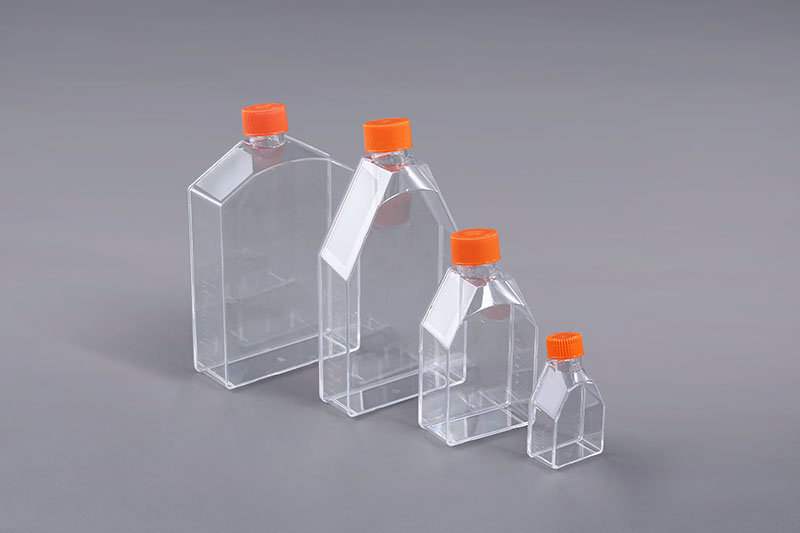Cell culture flasks are a type of cell culture consumables commonly used in adherent cell culture. Adherent cells are different from suspension cells and need to be attached to the surface of a support to grow. The effect of adherence directly affects the growth of cells, and the adherence effect of cells can be improved by the following methods:
1. Appropriate digestion of cells: HepG-2, A549, Hela, SGC-7901 cancer cells can be treated for a longer period of time. Generally, the treatment time is 5-6 minutes. C2C12, COS-7, NIH-3T3 are easier to fall off, and 2 minutes is sufficient. , P19Cl6 and 293 cells do not adhere tightly, so they can be replaced with fresh medium directly after rinsing in PBS to disperse them.
2. Use plastic cell culture bottles as much as possible. After such bottles are treated with TC, the adhesion performance of the bottles can be greatly improved, and the cells can be better attached to them.
3. Resuscitate new cells and use 20% serum to help cells recover in the first week.
4. Use appropriate extracellular matrix or adhesion reagents to help cells better adhere to the wall.
5. Try not to shake the cells within 24 hours of passage, so as not to affect the effect of cell adhesion.
6. Epithelial cells in the body grow on the basement membrane made of collagen, so culturing on the substrate with collagen is beneficial to growth. For human or mouse epidermal cell culture, 3T3 cells irradiated with γ-rays can be used as feeder layer, and the pH, Ca2+ content and temperature are reduced, which is beneficial to the growth of epithelial cells.
There are several ways to improve the adhesion effect of the cells in the cell culture flask. In addition, be sure to spread evenly during subculture to avoid cell clumping growth.
The FAI climbed 5.9 percent year-on-year in the first 11 months of 2018, quickening from the 5.7-percent growth in Jan-Oct, the National Bureau of Statistics (NBS) said Friday in an online statement.
The key indicator of investment, dubbed a major growth driver, hit the bottom in August and has since started to rebound steadily.
In the face of emerging economic challenges home and abroad, China has stepped up efforts to stabilize investment, in particular rolling out measures to motivate private investors and channel funds into infrastructure.
Friday's data showed private investment, accounting for more than 60 percent of the total FAI, expanded by a brisk 8.7 percent.
NBS spokesperson Mao Shengyong said funds into weak economic links registered rapid increases as investment in environmental protection and agriculture jumped 42 percent and 12.5 percent respectively, much faster than the average.
In breakdown, investment in high-tech and equipment manufacturing remained vigorous with 16.1-percent and 11.6-percent increases respectively in the first 11 months. Infrastructure investment gained 3.7 percent, staying flat. Investment in property development rose 9.7 percent, also unchanged.
 English
English



















































